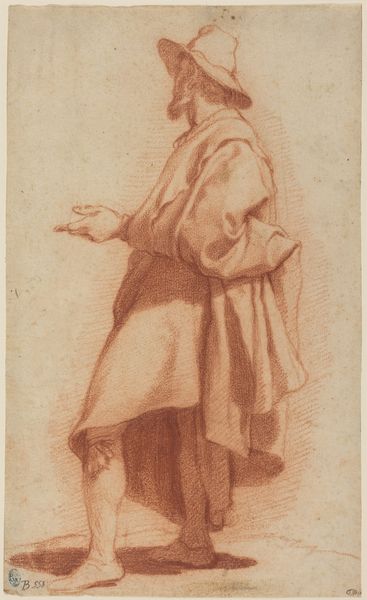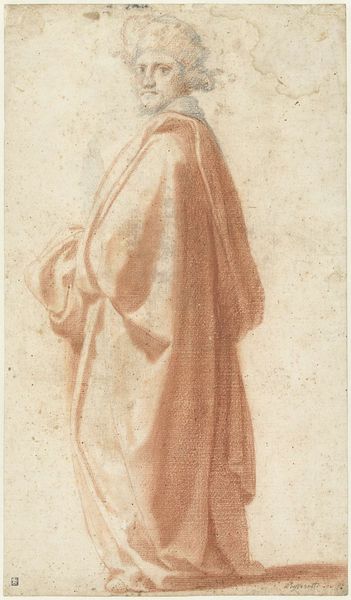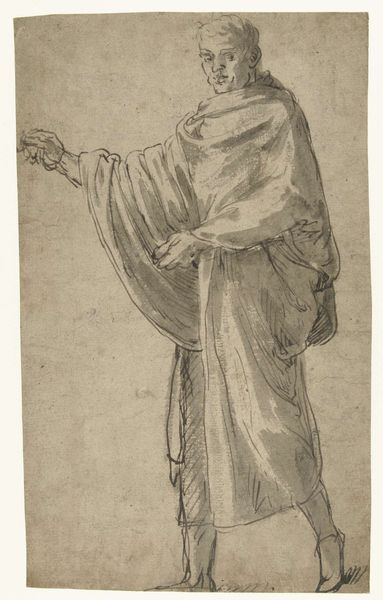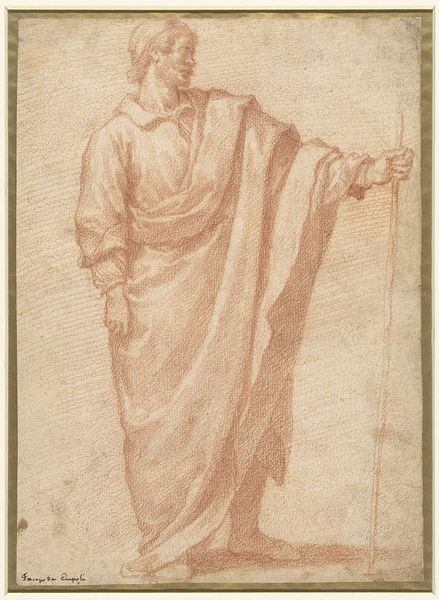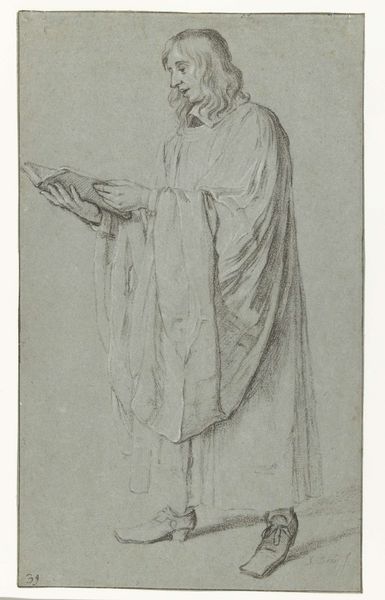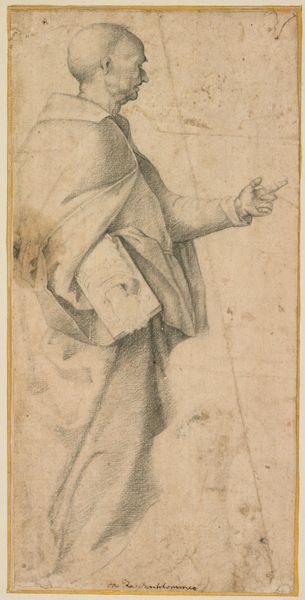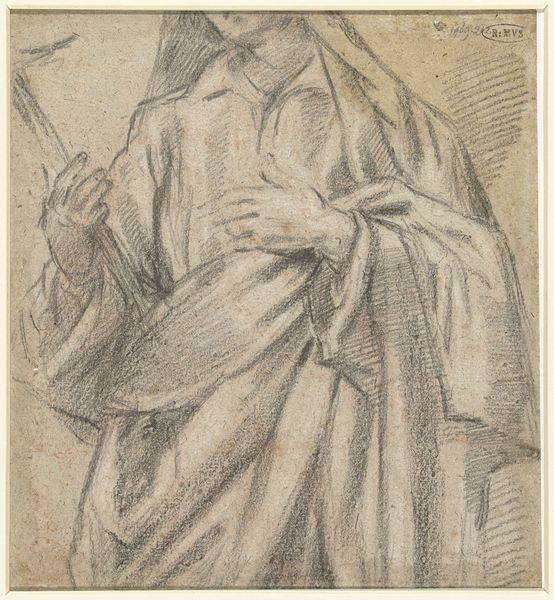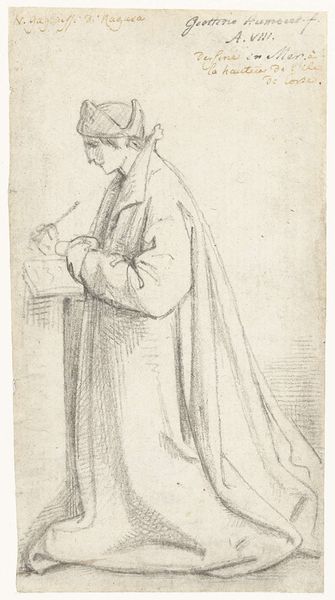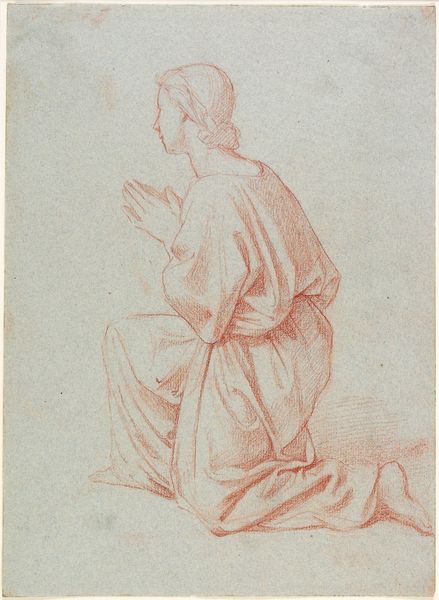
Copyright: Public Domain: Artvee
Editor: Here we have Abraham Bloemaert's "Study of a Woman in a Wide Mantle" from 1910, rendered in pencil. The red chalk really draws the eye to the texture of the fabric; it's so evocative! What can you tell me about this drawing? Curator: For me, the crucial aspect is Bloemaert's material choices and the act of production. This isn't just a study; it's evidence of labor, a trace of Bloemaert’s hand and the material reality of 17th-century artistic training. It's academic-art. Note the subtle gradations achieved simply through varied pressure on the pencil – this speaks to intense practice and material understanding, transforming a readily available material into something powerful. Editor: So, you're focusing less on the woman and more on Bloemaert's skill? Curator: Exactly! It is a ‘portrait,’ but not in the traditional sense of individual identity. I am concerned with what that “red chalk” drawing reveals about Bloemaert's social world of art production and artistic labor. We need to think of Bloemaert’s own positioning in art history, the conditions of academic artistic practice, and the value placed on drawing as a commodity or pedagogical tool. Editor: I see, almost like the drawing itself is a product of its time and the materials speak to a specific workshop practice. Curator: Precisely. Consider, too, the consumption of such drawings, their purpose beyond the purely aesthetic. How might such a study have been used within Bloemaert’s studio or sold to other artists for reference? What did “pencil” mean in 1610 in term of materials and cultural value? Editor: This gives me a fresh appreciation for how the simple materials of a drawing can illuminate so much about its context! Curator: Indeed. It shifts our focus from admiring a portrait to examining the material means by which art and artistic skill are produced and circulated within society.
Comments
No comments
Be the first to comment and join the conversation on the ultimate creative platform.
